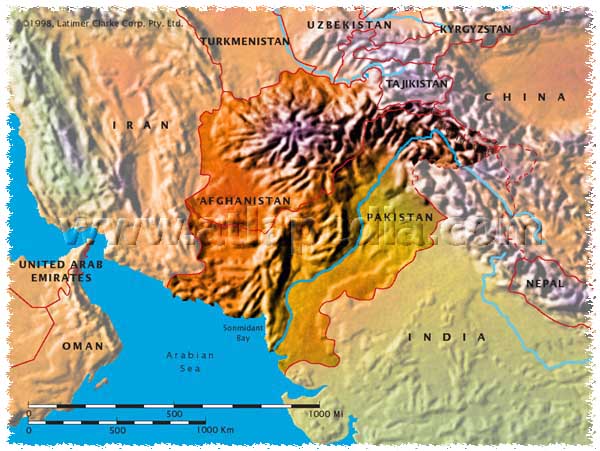By Jon Kofas.

Afghanistan has been subjected to Western military intervention several times in its history, starting with the first Anglo-Afghan war, 1839-1842. This war coincided with the First Opium war that England declared against China, demanding that China permit the East India Company sell Opium inside China, opium that came from India but would eventually come from Afghanistan as well. England fought two more wars against Afghanistan – 1878-1880 and in 1919.
However, it always had great difficulty imposing institutional control at any level owing largely to the rebellious tribes.
While officially gaining its independence after the third war that the British imposed on the people of Afghanistan in 1919, the country remained under the British imperialist sphere of influence, prompting a tribal uprising in 1929. Typical of the manner that the British operated throughout their empire when a country tried to gain independence, in 1933 London imposed a puppet ruler King Zahir Shah who remained in power just six years fewer than the Shah of Iran. The coincidence of the Iranian revolution in 1979 and rise of a secular pro-Soviet regime in Afghanistan came as a shock to the US that was the world’s self-appointed “policeman’ during the Cold War.
The contemporary history of US-Afghan relations is characterized by attempts on the part of Washington to reduce the Muslim nation into a strategic satellite and use it to counterpoise the USSR in the 1980s and Iran after 2001. Backing the disparate jihadists groups, including Osama bin-Laden’s, the US did its best to bring the secular regime down only to have it replaced by the Islamic Emirate of Afghanistan (Taliban) thanks to the support from Saudi Arabia and Pakistan, behind which was the US. When the US toppled the Taliban in 2001, civil war and chaos ensued because the country lapsed into war-lord rule.
The US would simply inherit the legacy of British imperialism at gunpoint. US military and financial intervention in Afghanistan during the 1980s against the Soviet-backed regime resulted in a strong Mujahedin resistance, along with a strong al-Qaeda that the US had also helped so they could bring down the Moscow-backed regime. All of this backfired because what replaced the secular leftist government was a much more militantly anti-Western regime that repressed human rights and declared America and the West its enemies.
Under President George Bush, the stated US goal in invading Afghanistan and coercing Pakistan to accept US military intervention on its soil from which to launch operation against the Afghan regime, Taliban and al-Qaeda was to capture and/or kill Osama bin-Laden thus eliminating the terrorism threat to the US. The stated goal had some merit, although al-Qaeda operated throughout many countries in the world and it was simply impossible to launch military invasions against friendly ones like Saudi Arabia. The unspoken US goal was to establish a foothold next to Iran, given that the US would also invade and occupy Iraq where regime change took place as it did in Afghanistan. In short, the real goal of the US was to determine the balance of power so that Iran does not enjoy that role or at least its power is considerably diminished. NATO sent troops and money to back the US war effort.
In 2008, amid a very deep recession looming in the horizon, Obama campaigned on the “bad war in Iraq” vs. the “good war” in Afghanistan, a campaign that afforded him political “legitimacy” with right wingers and with domestic and foreign lobbies that profit economically and/or politically from perpetual conflict in the Middle East. Before the 2008 election, I wrote a piece about the futility of US persistence in keeping Afghanistan as a satellite, raising questions about US goals relevant to this day:
* If the goal is to maintain a Karzai-type regime that controls only a part of the country while peasants grow heroin whose production has skyrocketed since the US invasion, then that goal has been achieved but at a very high cost to the US and especially to the people of Afghanistan and Pakistan alike. Afghanistan remains a very unstable country, torn by perpetual civil war conflict and it is now the largest poppy producer in the world because its legitimate economy is in shambles and lkely to remain so.
* If the goal is to allay the fears of the American people that the US “will continue to take the war to Al-Qaeda,” the question is whether this has yielded results other than psychological owing to the assassination of Osama bin-Laden. Is Homeland Security taking care of this problem at an immense cost to taxpayers, either that is at $1.6 trillion, as one estimate has it, or $6 trillion when everything is thrown into the mix, from the wars in Afghanistan and Iraq to funds spent at home?
* If the goal is to appease the substantially vociferous right-wing elements entrenched throughout American society from media and business to politics, intelligence services to military, as well as Israel and Saudi Arabia that link their security to a weak Iran, then the money and cost in every other respect is well worth it as far as the US policymakers are concerned
*If the goal is to maintain the military-industrial complex healthy and to use the culture of fear as a mechanism of conformity against the background of down socioeconomic mobilization at home, then the Afghanistan war, along with other US overt and covert militaristic adventures has succeeded. However, the cost is that the majority of the American people do not support US sending or maintaining troops in Afghanistan or anywhere in the Middle East, which is the key to Obama relying heavily on contractor and drone warfare.


